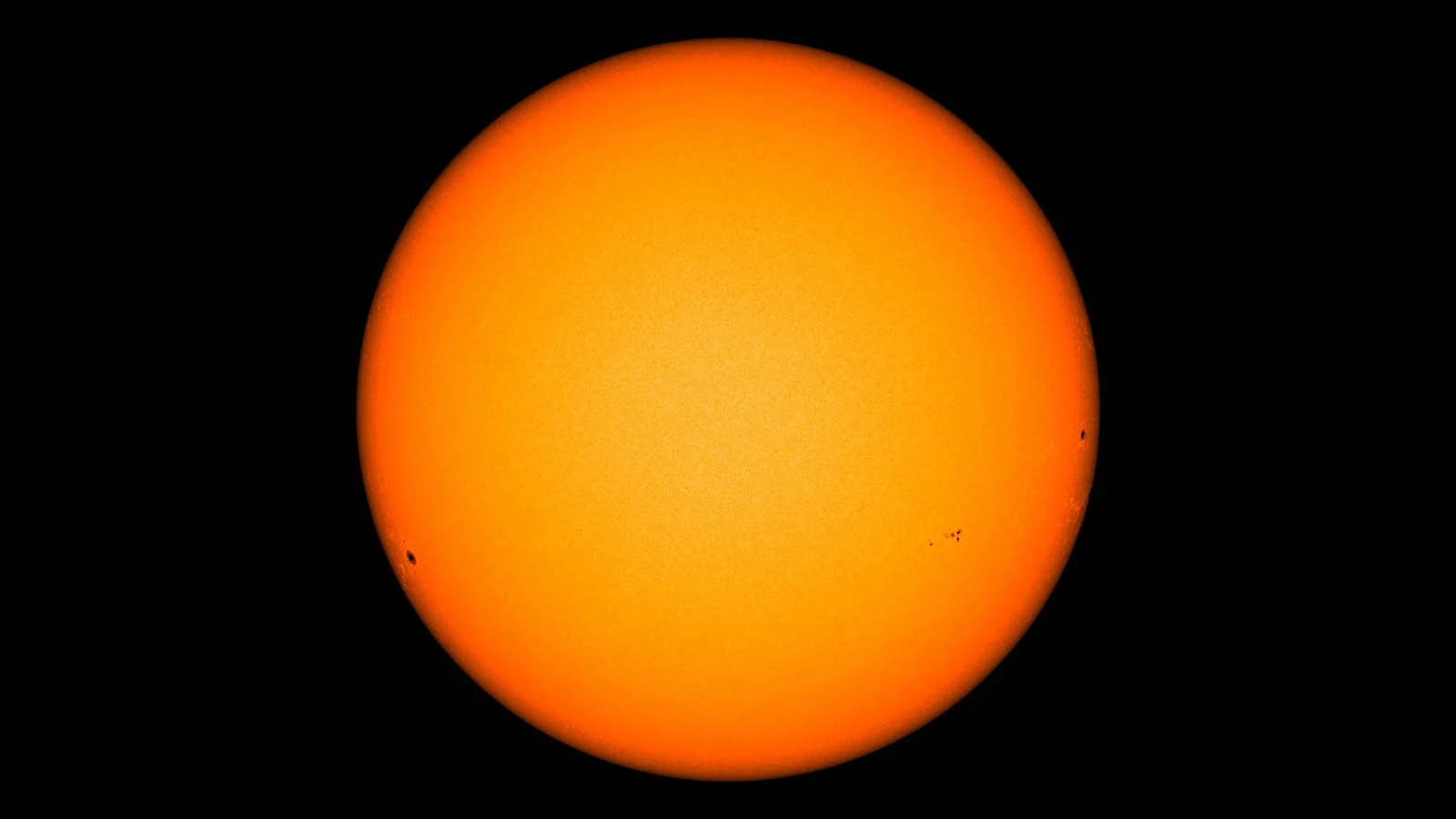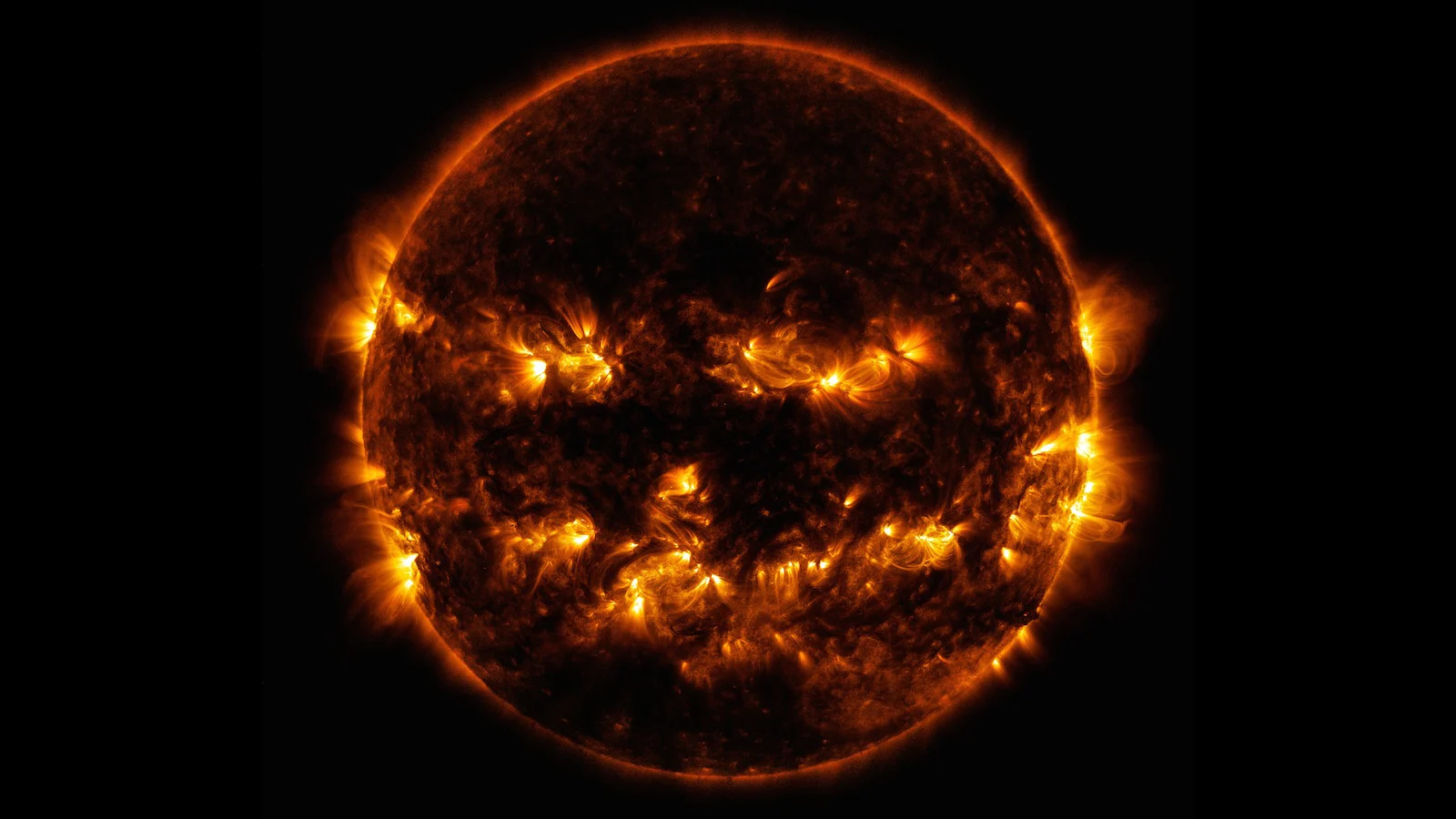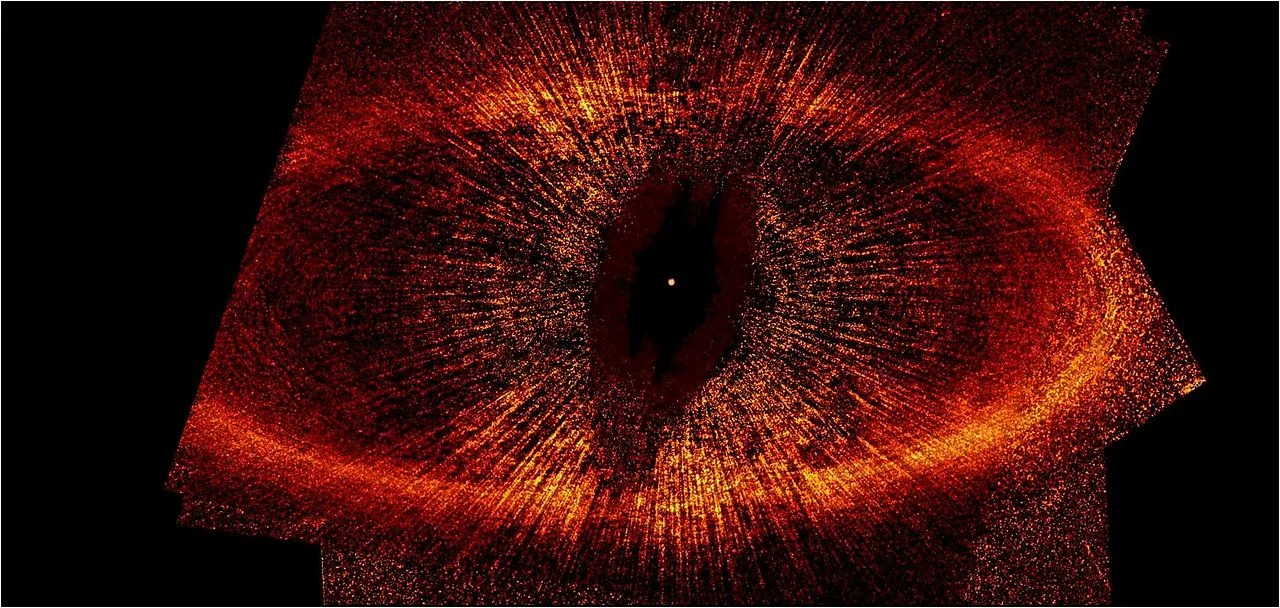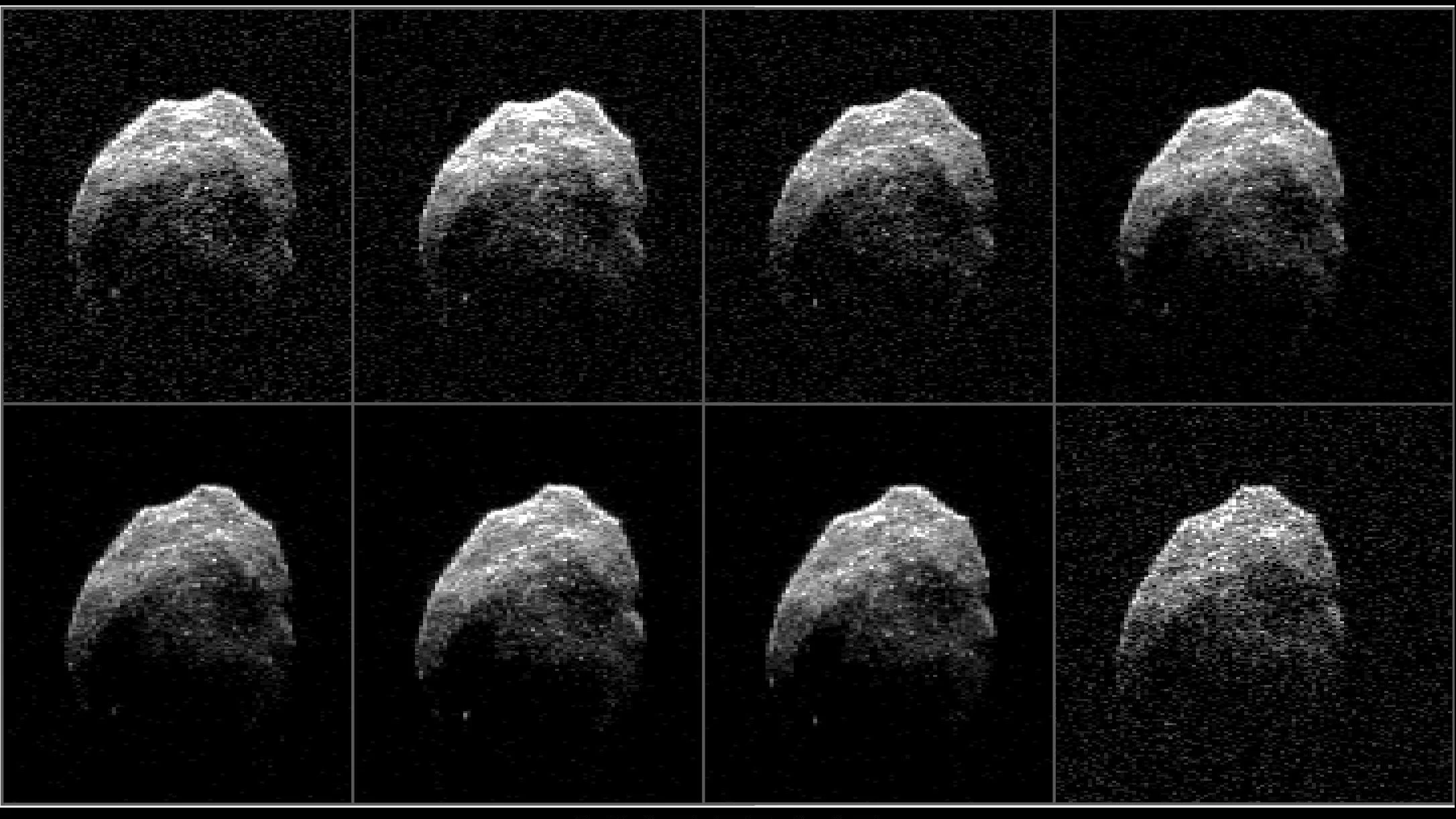
Five spooky Hallowe'en sights from the boundless depths of space
Happy Spooky Season!
Telescopes regularly reveal the wonders of our universe, but once in awhile, they also turn up hauntingly spooky sights out in the cosmos.
Here's the science behind some of the creepiest objects in space.
Solar Jack-o'-Lantern
Now in solar maximum, the Sun's activity has peaked, producing some beautiful displays of the Northern Lights in our skies over the past two years. A little over a decade ago, though, it put on a very different kind of show that was surprisingly appropriate for the Hallowe'en season.
On October 8, 2014, anyone peering at the Sun through solar eclipse glasses or with a solar filter on their telescope wouldn't have seen anything too out of the ordinary. There were only a few small sunspots marring the otherwise clear photosphere, as shown below.

This image of the Sun's photosphere was captured by NASA's Solar Dynamics Observatory (SDO) on October 8, 2014. (NASA)
However, NASA's Solar Dynamics Observatory, a satellite in space that keeps a near-constant eye on the Sun, saw something very different. With its camera filtering out all but high-energy ultraviolet light, it captured a hidden jack-o'-lantern grinning at us.

This image is a blend of two wavelengths of extreme ultraviolet light, as captured by SDO at roughly the same moment as the photosphere image, above. (NASA)
According to NASA: "The active regions in this image appear brighter because those are areas that emit more light and energy. They are markers of an intense and complex set of magnetic fields hovering in the Sun's atmosphere, the corona. This image blends together two sets of extreme ultraviolet wavelengths at 171 and 193 Ångströms, typically colourized in gold and yellow, to create a particularly Halloween-like appearance."
SPACE WEATHER: Geomagnetic storms: When should we look up and when should we worry?
The Eye of Sauron
"You know of what I speak, Gandalf. A great eye, lidless and wreathed in flame." — Saruman the White to Gandalf the Grey, in The Fellowship of the Ring.

The Fomalhaut star system, roughly 25 light years away from Earth. Credit: NASA, ESA, P. Kalas And J. Graham (University of California, Berkeley) and M. Clampin (NASA/GSFC)
One of the brightest stars in the sky is Alpha Piscis Austrini, located in the constellation known as "the southern fish".
A more common name for this star is Fomalhaut, and it has been a valuable target for astronomers over the years, especially using telescopes like Hubble and JWST. This is because the young star has a wide disk of debris surrounding it, which appears to be in the process of forming a brand new planetary system.
One of the most remarkable things about Fomalhaut in recent years was the apparent 'ghost planet' that astronomers spotted, which then suddenly vanished in 2020.
However, Hubble's very first image of Fomalhaut, from back in 2004, is what has made this star so memorable over the years, due to its uncanny resemblance to an icon of fantasy literature — the fiery Eye of Sauron, from J.R.R. Tolkien's epic Lord of the Rings.
READ MORE: Fomalhaut's hidden debris rings revealed in amazing detail by JWST
Hallowe'en Asteroid
Closer to home, a giant asteroid flew past Earth on Halloween in 2015. That's not the scary part, as it passed by at a completely safe distance of 488,000 kilometres, or over 100,000 km farther away than the Moon.
The scary part was discovered when scientists used a trio of radio telescopes to gather radar views of its surface.

Eight views taken from the radar observations of asteroid 2015 TB145 are shown here, produced by the cooperation of the Goldstone Deep Space Communications Complex and the Green Bank Telescope on October 31, 2015. (NASA/JPL-Caltech/GSSR/NRAO/GB)
Part-way into the observations, astronomers were shocked to see the play of light and shadow across the face of this 650-metre-wide space rock produce a skull-like visage turning towards us.

(NAIC-Arecibo/NSF)
Dubbed the Halloween Asteroid, it was revealed to be fairly special. Why? Because it may be a dead comet.
Comets are immense chunks of ice, dust, gas, and rock, which are left over from the formation of the solar system. When a comet gets closer to the Sun, the outer layers of ice begin to sublimate — turn directly from solid to gas — which sends streamers of ionized gas and dust out into space. This forms a cloud around the comet's nucleus, known as the coma, as well as two long tails, one made of dust and the other of ionized gas. Each repeated trips around the Sun causes the comet to lose more ice and gas and dust, and if it does this enough times, it can run out of these resources. What's left behind is a rocky remnant that may be the original nucleus around which the comet formed, long ago.
Now, despite its appearance, asteroid 2015 TB145 is certainly not the leftover skull of some immense celestial being. Instead, its appearance is simply due to pareidolia, which is our tendency to see familiar sights (such as faces) in random products of nature.
DON'T MISS: Asteroid's odds of hitting the Moon have now more than doubled
The Face of Jupiter
Speaking of the tendency to see faces in objects, just one year ago, NASA revealed a giant staring up at their Juno spacecraft as the orbiter swept by overhead.

Captured just along the terminator into night (the diagonal shadowed region that splits the image in half), the cloud patterns on Jupiter appear to form two misaligned eyes, a wide nose with a nostril, and a set of frowning lips. This image was captured by the Juno spacecraft on Sep. 7, 2023, during its 54th close flyby of Jupiter. (NASA/JPL-Caltech/SwRI/MSSS, Vladimir Tarasov)
According to NASA: "The image shows turbulent clouds and storms along Jupiter's terminator, the dividing line between the day and night sides of the planet. The low angle of sunlight highlights the complex topography of features in this region, which scientists have studied to better understand the processes playing out in Jupiter's atmosphere. As often occurs in views from Juno, Jupiter's clouds in this picture lend themselves to pareidolia, the effect that causes observers to perceive faces or other patterns in largely random patterns. Citizen scientist Vladimir Tarasov made this image using raw data from the JunoCam instrument. At the time the raw image was taken, the Juno spacecraft was about 4,800 miles (about 7,700 kilometers) above Jupiter's cloud tops, at a latitude of about 69 degrees north."
NASA's Juno spacecraft has been orbiting the planet Jupiter since July 2016. As of October 23, 2024, the probe has performed 66 'perijoves' — close passes around the gas giant. On each flyby it snaps pictures of the planet's swirling cloud bands and conduct gravity science to refine what we know about the planet's inner structure. More recently, Juno has been making close passes by Jupiter's largest moons, with the most recent pass by the volcanic moon, Io.
MORE FROM SPACE: Volcanic Io imaged in spectacular detail by NASA's Juno probe
The Eyes of the Cosmos
Just in time for Hallowe'en in 2024, Hubble and JWST captured an image of two interacting spiral galaxies — IC 2163 and NGC 2207 — which appeared as spooky red-tinged eyes staring at us from the cosmic beyond.

Spiral galaxies IC 2163 (left) and NGC 2207 (right) are presented in combined data from two of our most powerful space telescopes. The pair's macabre colors represent a combination of mid-infrared light from NASA's James Webb Space Telescope with visible and ultraviolet light from NASA's Hubble Space Telescope. (NASA, ESA, CSA, STScI)
According to the Space Telescope Science Institute (STScI), these two galaxies have only 'grazed' by each other, with IC 2163 (smaller, to the left) passing behind NGC 2207 (larger, to the right) over the last million years or so. During this close pass, the gravitational pull of each galaxy has influenced the other, possibly distorting the shape of their spiral arms, but most definitely sparking intense star formation.
"To spot the star-forming 'action sequences', look for the bright blue areas captured by Hubble in ultraviolet light, and pink and white regions detailed mainly by Webb's mid-infrared data," STScI said.
For just how intense this star formation is, STScI explained that both of these galaxies, combined, are estimated to be producing two dozen new stars like our Sun every year. Comparatively, our own Milky Way galaxy only forms two or three new Sun-like stars each year.
